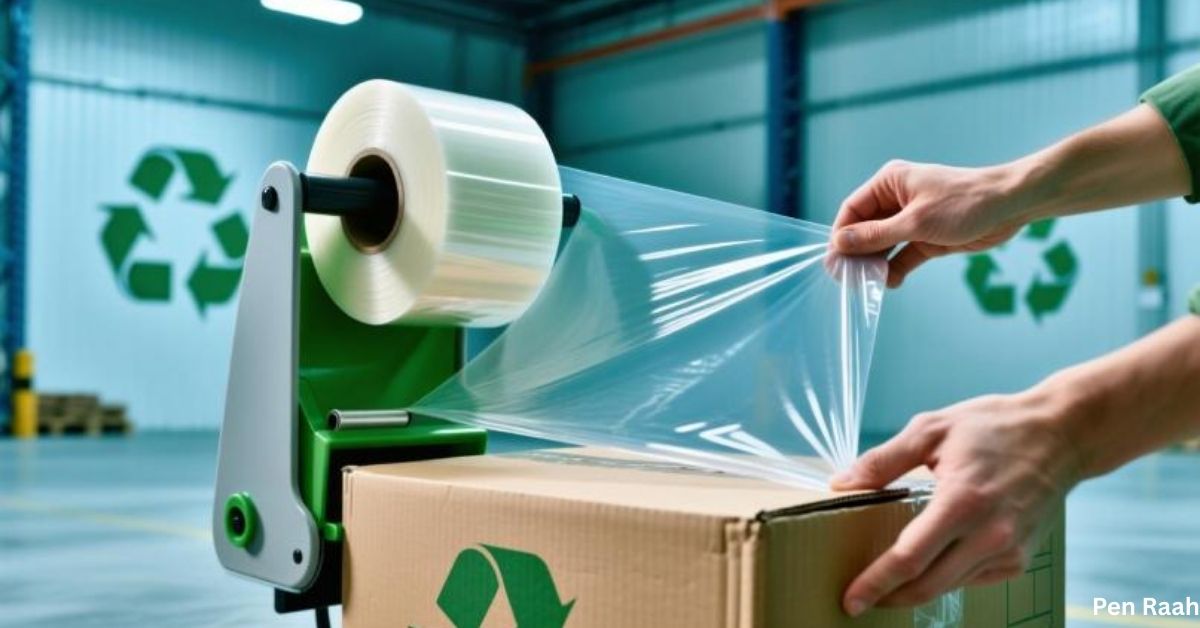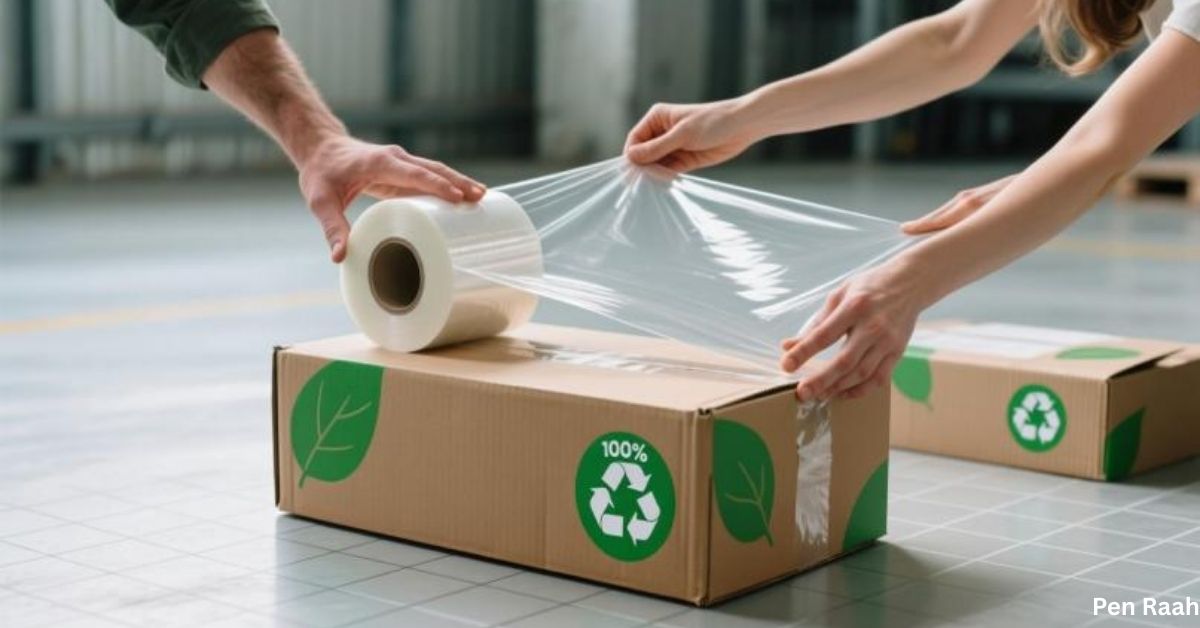Packaging plays a pivotal role in modern industries, from securing goods during transportation to enhancing their shelf life in storage. However, the packaging industry faces growing pressures to adopt sustainable and cost-effective practices. Enter coreless stretch film, a revolutionary solution for businesses looking to reduce waste, save costs, and improve efficiency.
This article provides an in-depth look into coreless stretch film, detailing what it is, why it’s essential, its applications, and how it compares to traditional alternatives. Whether you’re new to this concept or exploring greener packaging options, this guide will answer all your questions.

What Is Coreless Stretch Film?
Coreless stretch film is a stretchable plastic film primarily used to wrap and secure items on pallets or group smaller items together during storage and distribution. Unlike traditional stretch films that rely on a cardboard or paper core to structure the roll, coreless stretch film eliminates this component entirely.
How Does It Work?
The absence of a core reduces the overall weight of the roll, making it easier to handle and more efficient for applications. Coreless stretch films are compatible with both manual and automated wrapping systems, making them versatile and scalable for use across various industries.
The materials used to produce coreless stretch film are high-quality polymers that provide excellent elasticity and cling properties. This ensures goods are securely wrapped, preventing movement or damage during transport.
Benefits of Coreless Stretch Film
Adopting coreless stretch film offers several advantages for businesses, making it a noteworthy choice over traditional alternatives.
1. Eco-Friendly and Sustainable
One of the most significant benefits of coreless stretch film is its contribution to reducing waste. By eliminating the core, businesses no longer have to discard cardboard waste after the film is used. This aligns well with green initiatives and lowers the environmental impact.
2. Lightweight Handling
Coreless designs reduce the roll’s weight, making it easier for workers to manage during application. This can improve workplace efficiency and minimize the risk of fatigue or injury in manual handling environments.
3. Cost Savings
The lightweight nature of coreless stretch film reduces shipping and transportation costs. Additionally, eliminating cores can minimize disposal and recycling expenses, offering further economic benefits.
4. Improved Performance
Despite its simpler design, coreless stretch film offers exceptional elasticity and durability. Businesses benefit from secure wrapping and reduced material usage without compromising quality.
Comparison Table
| Feature | Coreless Stretch Film | Traditional Stretch Film |
|————————|—————————-|——————————–|
| Core Material | None | Cardboard or Paper Core |
| Environmental Impact | Lower | Higher |
| Ease of Disposal | No Core Waste | Requires Core Disposal |
| Weight Efficiency | Lightweight | Heavier Due to Core Design |
Applications of Coreless Stretch Film
Coreless stretch film finds use in numerous industries thanks to its adaptability and efficiency.
1. Logistics and Shipping
Coreless stretch film is widely used for palletizing goods during transportation. It ensures stability and reduces the risk of damage while saving on material costs.
2. Retail and Consumer Goods
Retailers use coreless stretch film to bundle products for shipment and stocking. Its lightweight nature helps optimize supply chain processes.
3. Warehousing and Manufacturing
Manufacturers use coreless stretch film to protect finished products awaiting distribution. It is equally effective in long-term storage settings, ensuring that goods remain clean and damage-free.

ALSO READ THIS BLOG: Tiimatuvat: Unlock the Best of Finnish Craftsmanship
Environmental Advantages
Switching to coreless stretch film has significant implications for sustainability. Elimination of the cardboard core means less waste entering landfills, and the lighter roll reduces transportation emissions. Additionally, many coreless films are recyclable, further enhancing their environmental profile.
Businesses adopting coreless stretch film can also bolster their reputation as eco-conscious companies. By contributing to greener initiatives, they appeal to environmentally aware customers and gain a competitive edge.
Coreless Stretch Film vs. Traditional Stretch Film
While traditional films are still popular in smaller operations and specific applications, coreless stretch film is quickly gaining popularity due to its modern design and ecological benefits.
The comparison table below illustrates how these two packaging solutions differ in key aspects.
| Key Attribute | Coreless Stretch Film | Traditional Stretch Film |
|————————|—————————-|——————————–|
| Environmental Waste | Minimal | Higher Due to Core Waste |
| Ease of Handling | Easier, Lightweight | Can Be Bulky |
| Long-Term Savings | Higher | Moderate |
| Compatibility | Manual and Automated | Manual and Automated |
Choosing the Right Coreless Stretch Film
When selecting coreless stretch film, consider the following factors to ensure the best results for your needs.
Film Thickness
Thicker films are ideal for heavier loads, while thinner options work well for lightweight items.
Cling and Elasticity
Choose a film that adheres well to itself and offers sufficient stretch to ensure load stability.
Application Type
Determine whether the film will be applied manually or with automated tools and select compatible products accordingly.
Volume Requirements
High-consuming industries may benefit from bulk purchasing or rolls designed to last for extended periods.
The Future of Coreless Stretch Film
The future of coreless stretch film looks promising, driven by technological advancements and the growing emphasis on eco-friendly practices. Innovations may include enhanced recyclability and stronger films that use less raw material.
Additionally, more industries are expected to adopt coreless solutions due to increasing sustainability mandates and cost-saving potentials. Businesses prioritizing green packaging practices will likely lead the charge in adopting this innovative material.
FAQs About Coreless Stretch Film
Does coreless stretch film require special machinery for application?
No, coreless stretch film works with both manual and automatic stretch wrapping systems.
Is coreless stretch film more expensive than traditional options?
While initial costs may vary, long-term savings in waste disposal, transport, and environmental compliance often make it more economical.
Can coreless stretch film be recycled?
Yes, most coreless stretch films are recyclable, aligning with sustainability goals.
Is coreless stretch film durable enough for heavy-duty use?
High-quality coreless stretch films are designed to handle both lightweight and heavy loads effectively.
How is the thickness of coreless stretch film measured?
Thickness is typically measured in microns or mils, and the choice depends on the weight and nature of the goods being wrapped.
Coreless stretch film represents a progressive step forward in packaging technology. By focusing on sustainability, cost-efficiency, and practicality, it offers businesses an innovative solution to traditional waste-heavy packaging methods. Whether you’re a logistics manager or an environmentally conscious entrepreneur, adopting coreless stretch film can demonstrate your commitment to a greener future.
